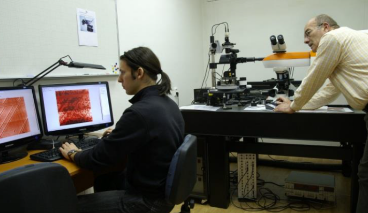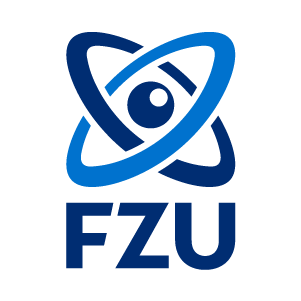
Light and neutron scattering
The group concentrates on investigation of lattice dynamics and critical phenomena in polar materials, like ferroelectrics and relaxor ferroelectrics. These materials are known for their extraordinary dielectric and electromechanical properties, widely used in industrial applications ranging from micro-capacitors and ferroelectric memories to transducers and actuators.
Search for new materials, such as lead-free piezoelectrics, which should replace toxic lead-based compounds in the near future, typically requires a detailed insight in the nature of their material–property relationships. Spectral studies of polar fluctuations in these substances, and in particular, revealing the dynamical origin of the ferroelectric phase transitions (so-called soft modes) are often the most fundamental starting points for quantitative modelling or in the search of reasonable material design rules.

Figure: Raman laboratory equipped with In-Via Reflex Raman Microscope (RENISHAW) combined with NTEGRA Spectra AFM Upright Microscope (NT-MDT)
The main in-house technique used in our group is Raman spectroscopy. Our laboratories are equipped with a micro-Raman spectrometer (488 nm excitation) in combination with a PFM microscope, which allows us to study phonons with high spatial resolution together with PFM images of ferroeelctric domain structure. Additional ultraviolet laser (325 nm excitation) is suitable for measurements of thin films.
To obtain comprehensive information about the lattice and relaxation dynamics of investigated materials, we frequently collaborate with other groups of Department of Dielectrics, like Dielectric and IR spectroscopy and THz science and technology. Moreover, to overcome selection rules of Raman and IR spectroscopic techniques, we perform Hyper-Raman scattering experiments in collaboration with
inelastic neutron scattering experiments at and x-ray scattering studies at
